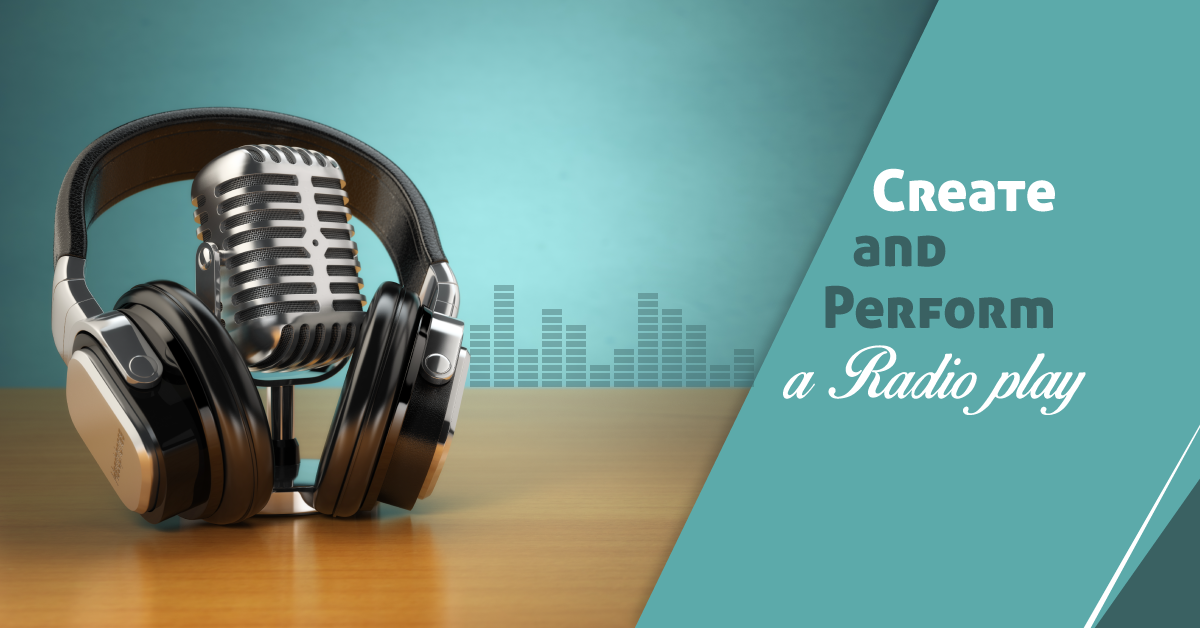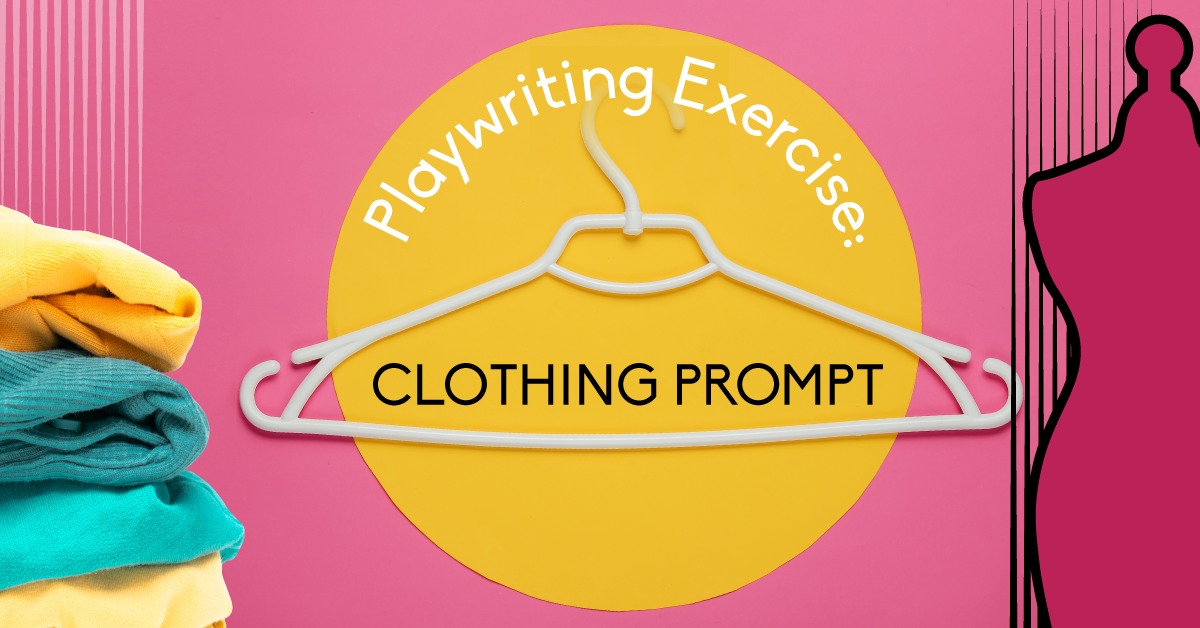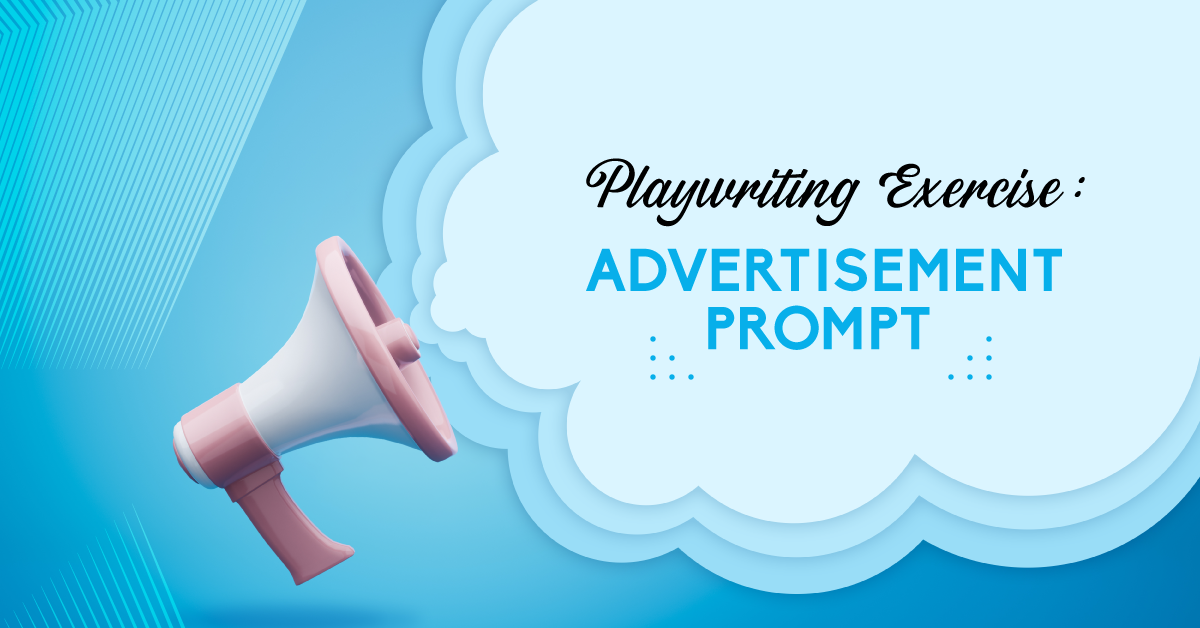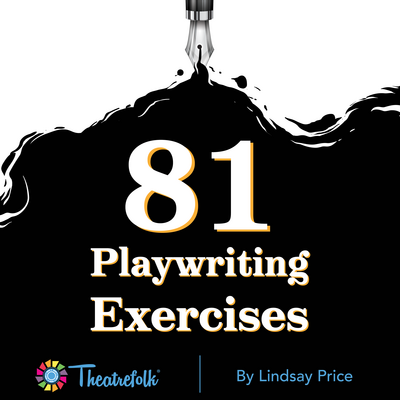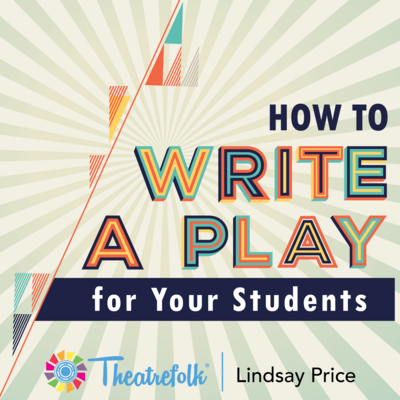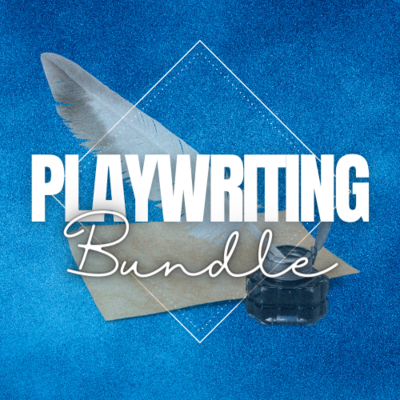Agatha Rex by Lindsay Price is a bold high school take on Antigone - packed with heart, conflict, and a powerhouse ensemble. One girl. One stand. One huge risk. *NEW COMPETITION VERSION AVAILABLE!*
Create and Perform a Radio Play
Radio plays are theatrical performances that are purely auditory; they’re meant to be performed on the radio, hence the name! There is no visual aspect, so performers must rely on their vocal performances as well as sound effects and music to convey the story to the audience.
Radio plays are fantastic for students to practice and develop many performance skills like projection, diction, and using emotion, without the pressure of actually getting up and performing in front of others. It also gives students the opportunity to creatively work with playwriting, selecting appropriate music, and creating sound effects.
The following exercise gives students the chance to create their own radio play using a children’s story as the source material. They will then have the opportunity to perform their play for the rest of the class (either a live or pre-recorded performance).
Pre-Assignment: Play examples of radio plays for students. This will reinforce for students that all storytelling aspects have to be oral – there are no visuals! You should also look for some examples of radio play script formatting. It’s a different medium than a regular stage play.
1. Selecting the Source Material
Students will form groups of 4-6. In their groups, students will select a children’s story to adapt into a radio play.
2. Writing the Play
Students will adapt the children’s story into a script. Remind students to follow the radio play script formatting. Many radio plays use a narrator to set the tone of the story, switch between scenes (“Meanwhile, back at the ranch…”), and to keep the action going between character’s lines. Focus on creating really clear, strong, descriptive lines by using adjectives and “sense” words (sight, smell, taste, touch, sound) to set the mood. For example:
- “Jessica sauntered into the room in a shimmering green evening gown.”
- “The scent of freshly-baked cinnamon cookies made Mike’s mouth water.”
- “A frightened Kyle peeked out the window to see a tall, sinister-looking man skulking around the garbage cans.”
- “The wolf grinned menacingly, revealing a huge set of glistening-white, razor-sharp teeth.”
3. Choosing Appropriate Music and Sound Effects
Students will choose at least 3 clips of music (one for the beginning of the piece, one for a significant part of the middle of the piece, and one for the end) to use in the play, as well as at least 5 sound effects. These sound effects can be found online or in a sound effects library, or they can be created live. Students must ensure that the music and sound effects are appropriate for the scene while not overpowering the vocal performances.
4. Casting and Rehearsing the Play
Students will each take a role in the play and develop an appropriate character voice for their part, focusing on clear diction and enunciation, and showing emotion. Remember that there’s no visuals, they have only their voice to work with. Students should rehearse their roles so they are comfortable and familiar with their words. Performances do not have to be off-book, but will be MUCH easier if students are well-rehearsed.
NOTE: If there are not enough roles to go around, one student can be solely in charge of performing the sound effects, or the narrator role should be split up. Alternatively, students can adapt their play to include more characters.
5. Performing the Piece
Students have two options to perform the piece:
LIVE: Students will perform the piece live, in front of the rest of the class. The rest of the class will face away from the performers while they are presenting, so the group cannot use visual clues to tell the story. Music and sound effects will be performed as part of the presentation, either performed live or by utilizing prepared music and sound effects (on a computer, CD player, or MP3 player).
PRE-RECORDED: Most cell phones come with an audio recorder, or students can create their performance using a microphone and audio recording software on their computers (like Audacity or Adobe Audition). Music and sound effects will be performed during the recording, either performed live or by utilizing prepared music and sound effects. The recorded performance will be brought to the class and played for the rest of the class to listen to.
Distance Learning Adaptation
This adaptation is a simplified exploration of radio plays and found sounds that can be done as a full class on a video conferencing app, such as Zoom.
1 .Select a two-person scene. There are lots of good free ones on the Theatrefolk resource page – my favourites are “The Big Lie” from Ten/Two, “Pretty Girl/Plain Girl” from Ten/Two, and “Josie and Pete” from Somewhere, Nowhere.
2. Give students access to the scene. If possible, have students print out the scene so they can highlight and make notes on the page; alternatively, they can make notes in a separate word document or in a notebook.
3. Have students read the scene to themselves individually. Then, have volunteers read the scene aloud.
4. In a radio play, there are no visuals, so the atmosphere needs to be shown through sound. As a group, identify moments in the scene where sound effects could be added. For example, in “Josie and Pete,” there is a stage direction that says Josie opens a paper lunch bag. Look for less obvious moments as well. In the same scene, Josie enters through a doorway, and Pete starts to pace around the room. Those are moments that could include sound effects as well.
5. Once students are satisfied that they have found all the moments that sound effects could be added, have them work through each moment and figure out how they would make the sound effect using found objects from their homes. For example, when Pete starts to pace around the room, a student could take a pair of shoes and walk around the room, or put them on their hands and make footstep sounds. What kind of shoes does Pete wear – sneakers, boots, leather-soled dress shoes? They all sound different. What would the students choose and why? Experiment with different sounds.
6. Have students consider how they can make the sounds clear through their device microphones. Where do they need to place the microphone to get the best volume, or an interesting effect (such as an echo)? As well, how they could make sound effects from items they don’t have. For example, what could students use to make a paper lunch bag sound if they didn’t have an actual paper lunch bag? Would a piece of notebook paper make a similar sound? What about a piece of newspaper?
7. At the end of class, have students write and submit a brief response for the following Exit Slip: What was one thing you learned from today’s exercise?
Related Articles
81 Playwriting Exercises
by Lindsay Price
81 exercises that can be used to get students in the habit of writing on a regular basis.
How to Write a Play for your Students
by Lindsay Price
You’ve chosen to write a play for your students! Where do you start?
Resource Bundle - Playwriting
Use these 4 Playwriting drama teaching resources to make playwriting possible with your students. Great for warm-ups, prompts, writer's block and more!
